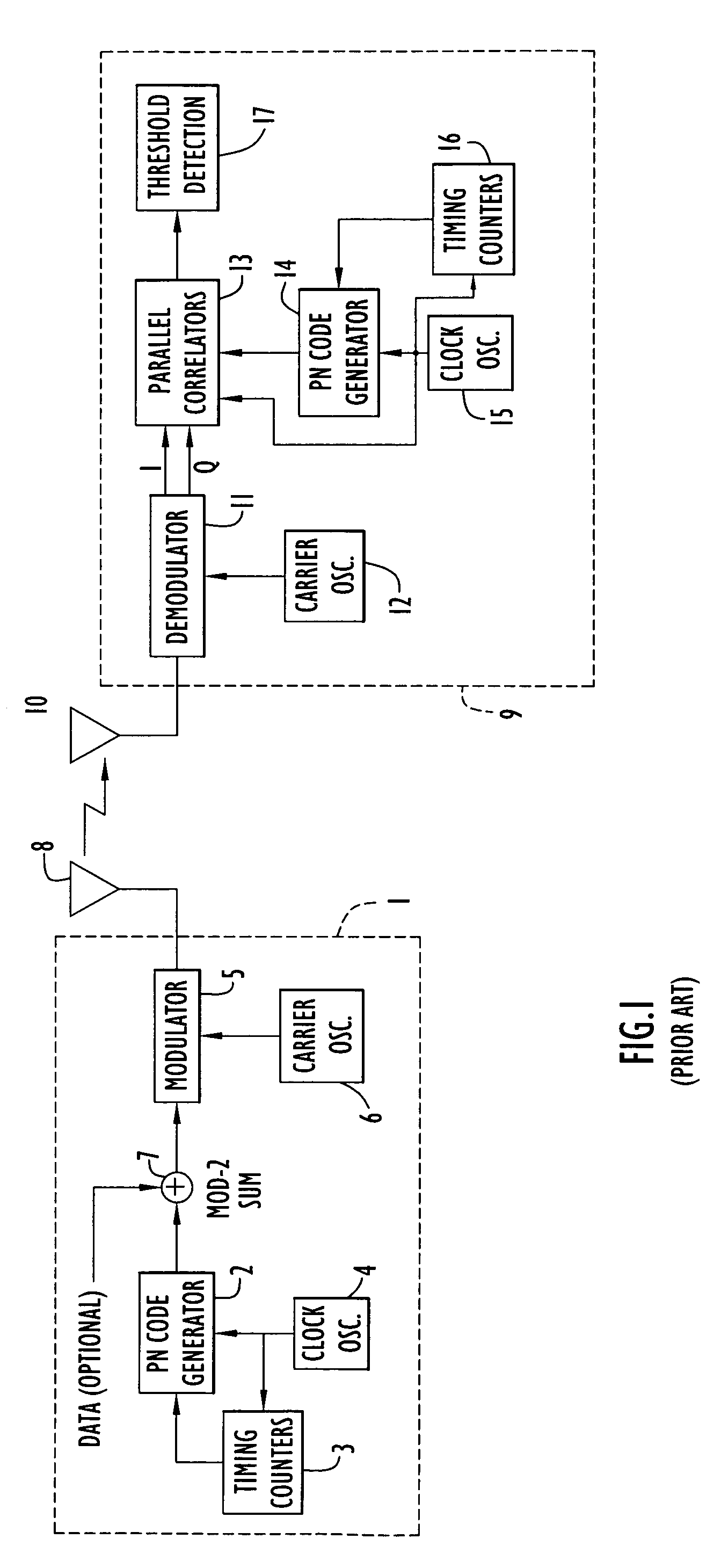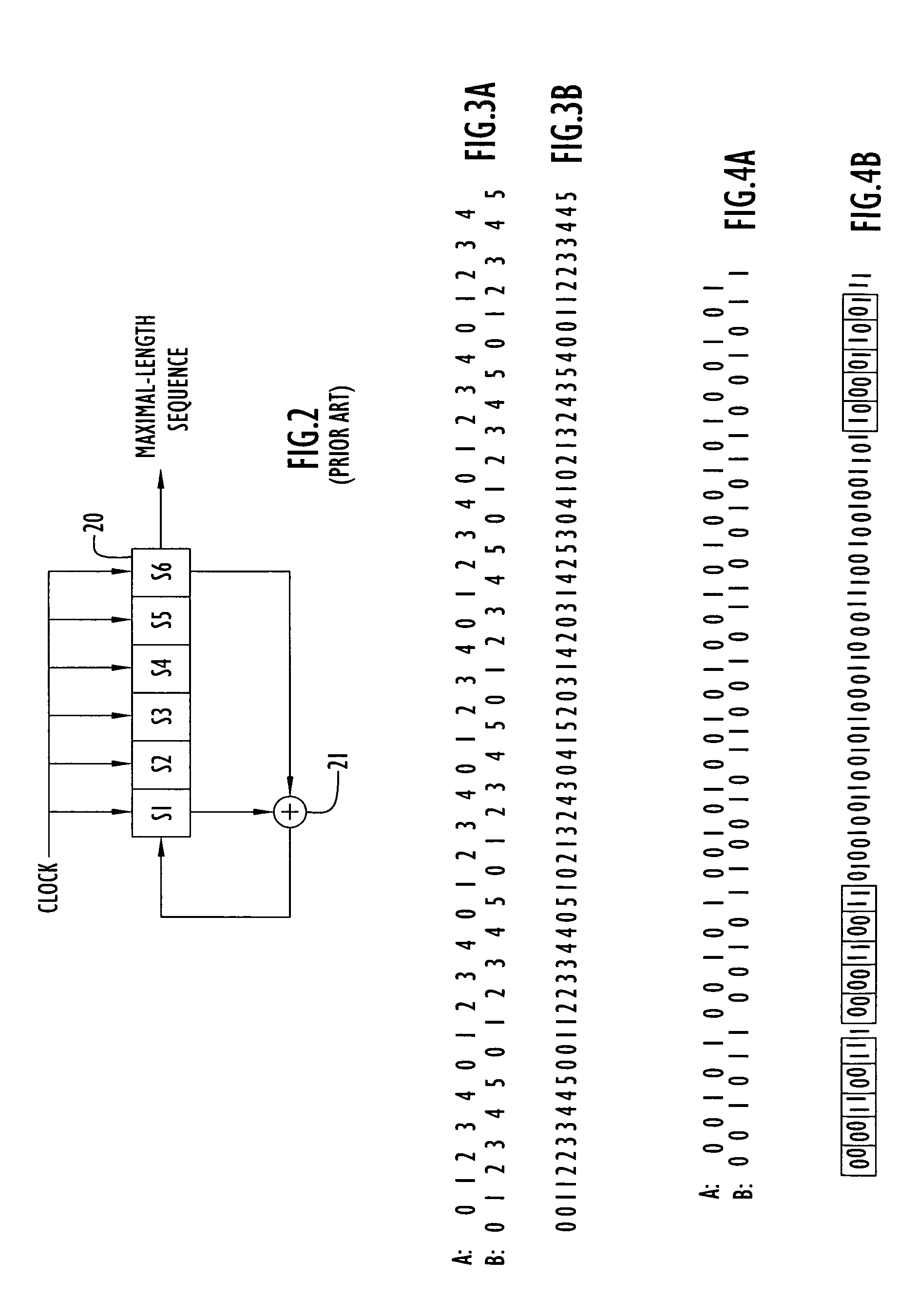Method and apparatus for generating an interleaved code
a technology of interleaved codes and code generators, applied in the field of digital data transmission systems, can solve the problems of large hardware cost, low noise tolerance, and inability to reliably convey timing of single pulse or simple signal feature, etc., and achieve low hardware cost, good noise tolerance, and detection quickly
- Summary
- Abstract
- Description
- Claims
- Application Information
AI Technical Summary
Benefits of technology
Problems solved by technology
Method used
Image
Examples
Embodiment Construction
[0056]The following detailed explanations of the preferred embodiments describe the best known ways of practicing the present invention.
[0057]The invention herein described combines two or more short codes to achieve the performance of a much longer code. For example, two codes of about one thousand bits each transmitted in about one millisecond can be combined to make a composite code of about two million bits transmitted in about two seconds. This provides one code alignment every two seconds, and increases the noise tolerance two-thousand-fold over the short code, which may be necessary if a jamming signal is present on the communication links. Although the descriptions and examples provided here will favor the case where the code is repeated, the invention also can be applied to the situation where the code is transmitted only once.
[0058]Summing correlations of a received signal with a 1000-bit reference code over two thousand repetitions of the 1000-bit PN code will provide the...
PUM
 Login to View More
Login to View More Abstract
Description
Claims
Application Information
 Login to View More
Login to View More - R&D
- Intellectual Property
- Life Sciences
- Materials
- Tech Scout
- Unparalleled Data Quality
- Higher Quality Content
- 60% Fewer Hallucinations
Browse by: Latest US Patents, China's latest patents, Technical Efficacy Thesaurus, Application Domain, Technology Topic, Popular Technical Reports.
© 2025 PatSnap. All rights reserved.Legal|Privacy policy|Modern Slavery Act Transparency Statement|Sitemap|About US| Contact US: help@patsnap.com



